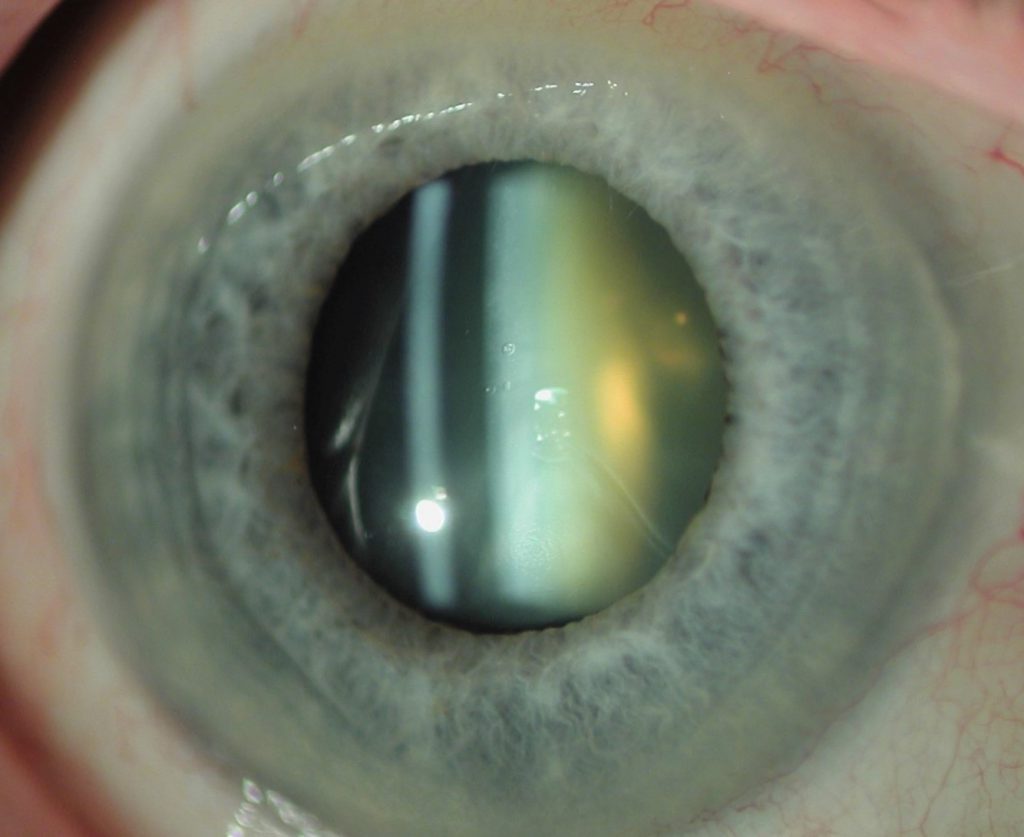The crystalline lens of the eye is normally transparent. Cataract occurs when part of the crystalline lens becomes opaque or cloudy and it usually develops gradually over time as we get older. More than 90% of people develop cataracts by the age of 65 and it is part of normal ageing.

What are the Symptoms of Cataract?
Symptoms from cataracts may not be noticed initially but as the cataract progresses, your vision may become blurred, hazy and distorted, interfering with daily activities such as reading and driving. A large proportion of patients with cataract may also experience glare, sensitivity to bright lights, and haloes around lights, commonly experienced when driving at night.
People with a family history of cataract, history of diabetes, smoking, excessive UV exposure, steroids use, short-sightedness, previous eye surgery or trauma may develop cataracts earlier and also at a faster rate.
What Should You Consider If You Need Cataract Surgery?
Whether you are an avid reader, a keen golfer, or a crossword enthusiast, your lifestyle preferences determine your visual needs. When you consider cataract surgery, the following questions may help you get started on thinking what your vision requirements are:
- What do you for a living? Can you see to perform your job safely?
- Do you like to read? Do you have problems reading in print?
- Do you have problems watching television?
- Do you have trouble seeing computer screens or ipads?
- Is it difficult to cook, shop, take medications, or do gardening?
- Do you drive at night?
- Do you spend time in dimly lit environments?
- Does your vision affect your level of independence?
- Do you have astigmatism or amblyopia?
- Would you like to enhance your vision at certain distances for daily tasks or hobbies?
- Which eye do you prefer for distance viewing / reading or both?
- Would you prefer to reduce your dependence on glasses?
What is the Next Step?
Dr Lawrence Lee will perform a comprehensive eye examination, advise on the extent of how your cataract has impacted your vision, and discuss in depth the risks and benefits of cataract surgery with you. He will also discuss your occupation, daily tasks and activities that you enjoy doing to identify ways in which you use vision. This will help us determine and tailor the best treatment and intraocular lens (IOL) options to meet the demands of your visual needs.
Recent development in the IOL design has given ophthalmologists the ability to select from a wide range of intraocular lens types, from the standard monofocal, multifocal, toric (to correct astigmatism) to the latest extended depth of field lenses (EDOF) which are designed to improve mid-range vision without the concentric rings of the multifocal lens types. Whilst vision correction with intraocular lenses aims to improve vision, spectacle correction may still be required to optimize reading vision.
Cataract operation involves the use of phacoemulsification which is an ultrasound probe connected to a highly advanced phaco machine. This removes the cataract through a very small incision in the front of the eye. For more information on cataract surgery and post-operative care, click here.
Do you have questions or concerns about your eye health or a specific eye condition? To discuss, please contact City Eye Centre for more information.onnected to a highly advanced phaco machine. This removes the cataract through a very small incision in the front of the eye. For more information on cataract surgery and post-operative care, click here.
